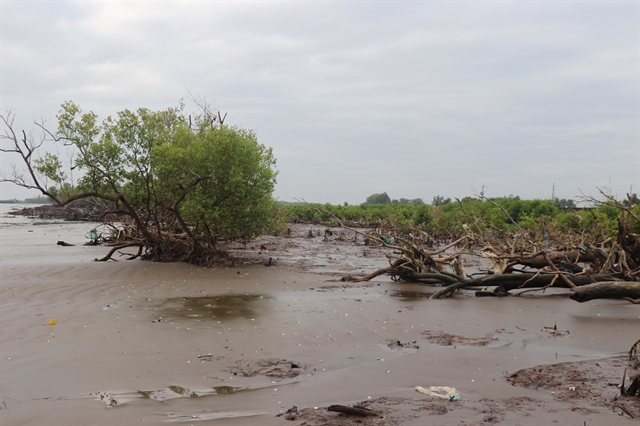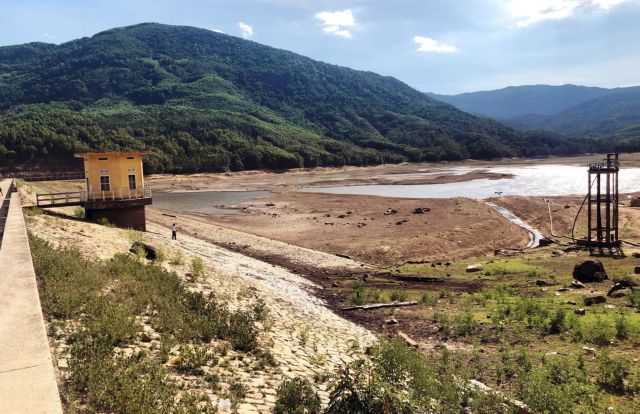 Environment
Environment

The Ministry of Agriculture and Rural Development (MARD) has called on provinces in the south central coastal and Central Highlands regions to take measures to minimise the impacts of drought on summer-autumn crops.

|
| A reservoir in central Bình Định Province has fallen to "dead" (critically low) water level. — VNA/VNS Photo Nguyên Linh |
BÌNH ĐỊNH — The Ministry of Agriculture and Rural Development (MARD) has called on provinces in the south-central coastal and Central Highlands regions to take measures to minimise the impacts of drought on summer-autumn crops.
Speaking at a conference in the central province of Bình Định on Friday, Deputy Minister Lê Quốc Doanh urged localities to review regions and sub-regions to find water resources to meet rice production.
It is essential to avoid cultivating rice in areas at risk of lacking water, Doanh said.
According to the ministry, farmers will face difficulties this season, as the south-central coastal and Central Highlands regions have experienced lower rainfall than in the previous years.
From March to May, the coastal provinces of Thanh Hoá, Ninh Thuận and Bình Thuận, and Central Highlands and southeast localities were predicted to witness severe water shortages, according to Châu Trần Vĩnh, deputy head of the Department of Water Resources Management.
In the provinces of Bình Định, Ninh Thuận and Bình Thuận, the water level in many reservoirs would reach only 10-40 per cent of the designed capacity.
Meanwhile, in the Central Highlands region, the level would be about 62 per cent. At present, the region has nearly 350ha of crops lacking water. The total area is forecast to reach 25,000-30,000ha due to low rainfall.
The Central Highlands province of Lâm Đồng is seeking more than VNĐ127 billion (US$5.5 million) from the Government to repair and dredge irrigation and water supply projects in rural areas during the peak drought season.
The province has had little or no rain in the first two months of the year, with average rainfall lower than normal, according to its Department of Agriculture and Rural Development.
About 25,000ha of farmland and 4,300 households in the province were expected to face water shortages if the hot weather continues for much longer, according to the department.
Deputy Minister Doanh suggested shifting to other crops that needed less water, and focusing on short-time rice varieties with high yield and pushing the seasonal calendar up to 15 days earlier to take advantage of water sources.
MARD proposed cutting down 10,000-47,000 hectares of rice to deal with drought.
The ministry proposed these localities to zone off areas at high risk of drought and lacking water to change their production structure from three crops to two crops or shift to other short-term crops.
According to the ministry, in the winter-spring crop 2019-20, the two regions had over 314,200ha of rice with an estimated yield of 66.3 tonnes per hectare.
A report issued by the World Bank in 2019 predicted the rising level of water-related threats could reduce Việt Nam’s GDP by 6 per cent by 2035. At the same time, the rising demands of water was forecast to harm 11 out of 16 basins in the country by 2030. — VNS




